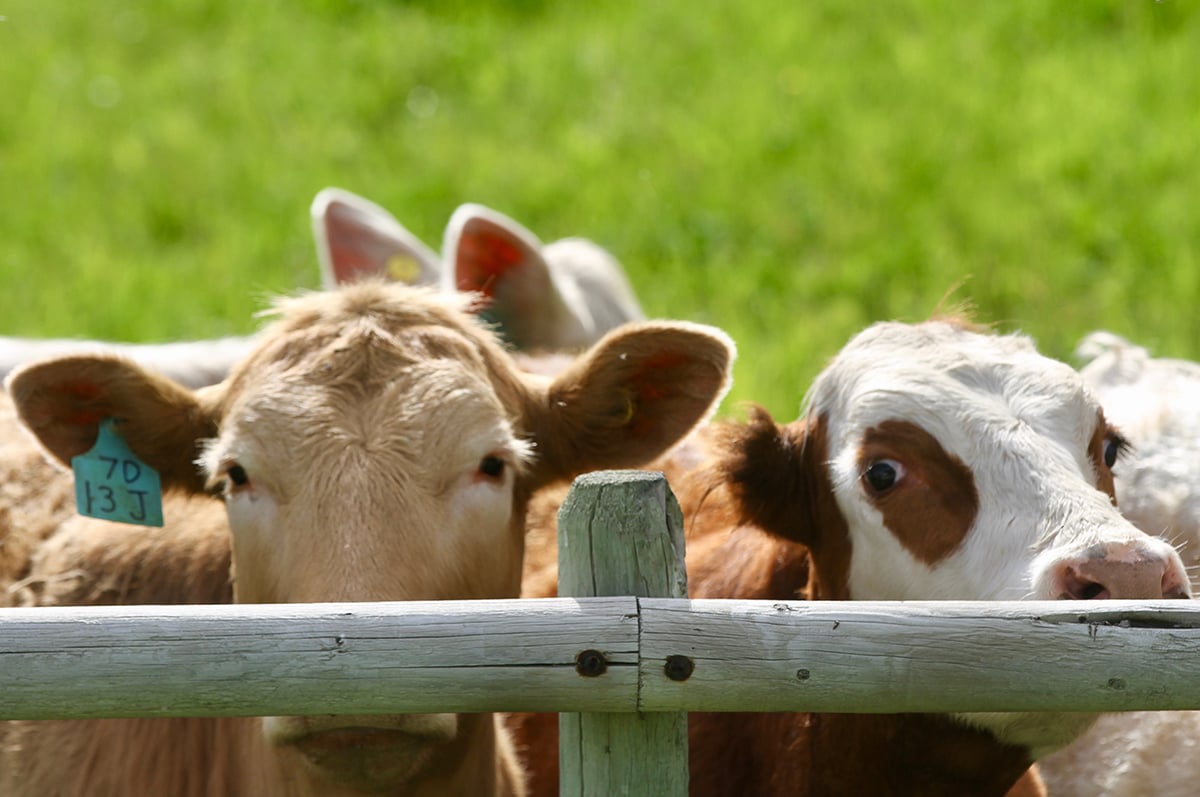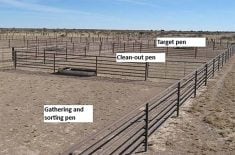BASSANO, Alta. – Cam Clark is going to feed corn to his cows for the first time this fall.
The Bassano rancher is not alone among Alberta beef producers who are desperate for feed grain and hay as drought persists across southern Alberta and southwestern Saskatchewan.
“I figure with what I’m going to have to feed this year, the corn will save some money. With corn, I should be able to save 50 cents per head per day.”
He bought a carload of 100 tonnes of American corn in June for $15 Cdn a tonne less than the equivalent amount of barley.
Read Also

Feeder market consolidates at historic highs
For the week ending Sept. 6, Western Canadian feeder cattle markets were relatively unchanged compared to seven days earlier.
His cattle are already being supplemented with oats and hay because pastures are bone dry. Clark anticipates a feeding period that could last 200 days, 80 more than normal.
The plan is to wean calves two months early to take pressure off cows trying to maintain themselves and keep calves gaining. He and his father do not want to disperse their herd.
“It takes a lifetime to build a herd and it takes 30 seconds to sell it.”
He is not alone in his decision. Michael Bershied, of Feedlot Strategies in Calgary, said 100,000 tonnes of corn could be delivered to Alberta feedlots by the end of the year.
“It’s no secret a lot of corn is coming in,” he said.
There is a shortage of feed grain and some farmers are holding onto last year’s barley hoping for more money, said Terry Carpenter of Independent Transloader Ltd. at Bassano, Alta. His company arranges freight, unloading and delivery of feed grains for customers across Western Canada.
“Farmers have locked their bins up, figuring they’re sitting on a fortune and they’re going to turn the screws on the feeders,” said Carpenter.
However, the feeders are looking elsewhere and have been buying durum or American feed corn since the end of May.
Part of the problem is the inflated price of barley. In a normal market scenario, barley prices follow corn. This year barley is priced above corn.
In addition, there has been an $18 difference between cash barley and the futures price, creating an inverted market, said Carpenter.
He is handling old-crop corn coming in by rail from the Dakotas and Minnesota.
Feeding corn is a tried and true practice in the U.S., said Alberta Agriculture beef specialist Pat Ramsay. It has more energy than barley but less protein.
Barley has 1.66 megacalories per pound of digestible energy, compared to corn at 1.76 megacalories. The average protein in barley is 12 percent, while corn is 10 percent. Additional protein may have to be added to a corn ration.
For the feeding industry, handling corn is not difficult. The real difference is cost. Barley in the Lethbridge area is trading at $160 per tonne, compared to corn at $142-$145.
“The only reason we are feeding it here now is because the barley prices are so high,” said Lethbridge based feedlot specialist Karen Schwartzkopf-Genswein.
Soaring temperatures and no rain have fried the southern Alberta barley crop.
“Crops around here are not as good as they should be, even with irrigation. There’s going to be a lot of light barley, which the feedlots don’t like to use,” she said.
Corn is introduced to rations slowly and kernels should be processed by rolling, steaming or flaking. This releases nutrients more readily than a whole product.
Corn is not new to local feeders. In recent years, more silage and field corn have been planted in the Taber area for the livestock trade. Varieties requiring less heat than American corn have been successfully grown.















